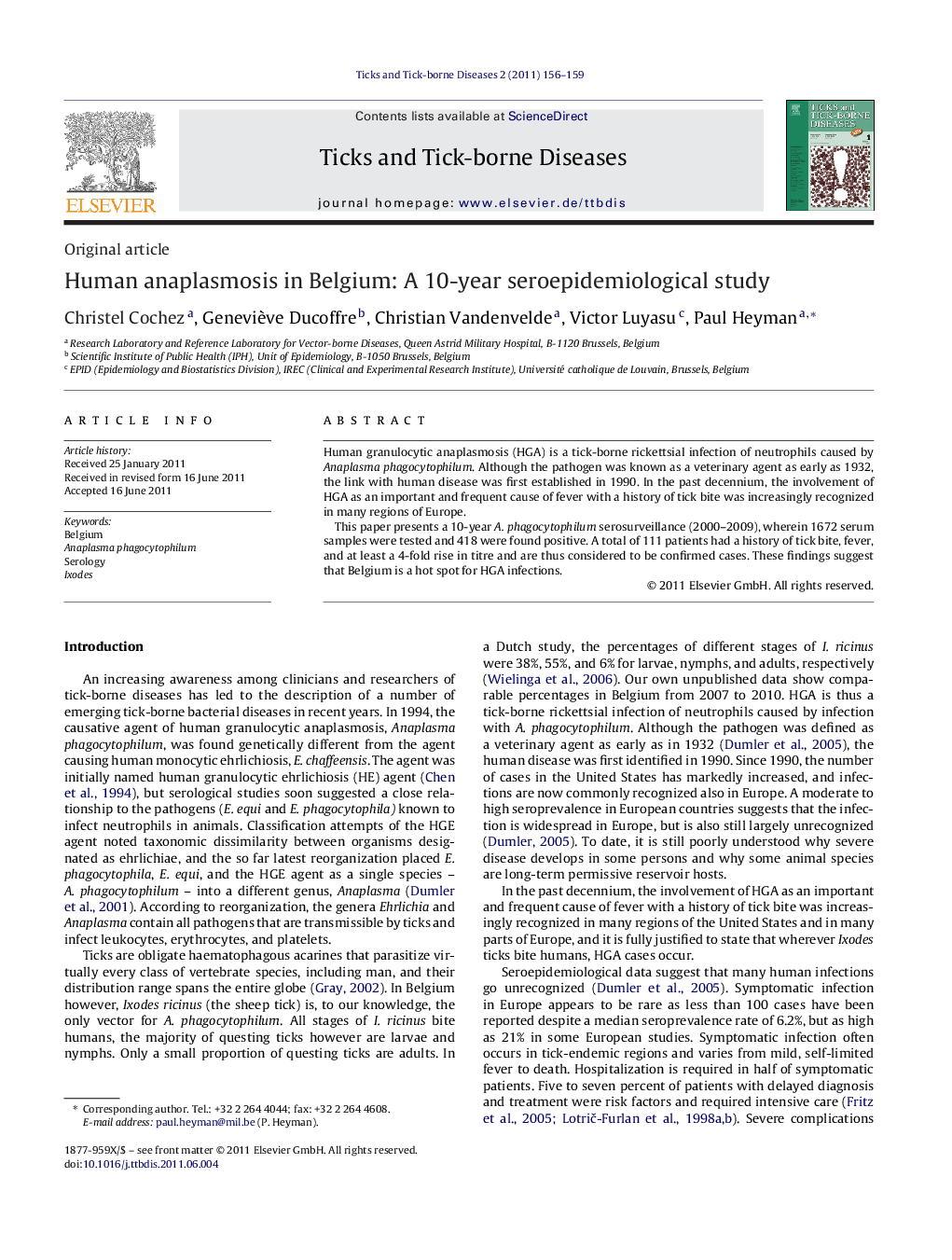| Article ID | Journal | Published Year | Pages | File Type |
|---|---|---|---|---|
| 2473953 | Ticks and Tick-borne Diseases | 2011 | 4 Pages |
Human granulocytic anaplasmosis (HGA) is a tick-borne rickettsial infection of neutrophils caused by Anaplasma phagocytophilum. Although the pathogen was known as a veterinary agent as early as 1932, the link with human disease was first established in 1990. In the past decennium, the involvement of HGA as an important and frequent cause of fever with a history of tick bite was increasingly recognized in many regions of Europe.This paper presents a 10-year A. phagocytophilum serosurveillance (2000–2009), wherein 1672 serum samples were tested and 418 were found positive. A total of 111 patients had a history of tick bite, fever, and at least a 4-fold rise in titre and are thus considered to be confirmed cases. These findings suggest that Belgium is a hot spot for HGA infections.
